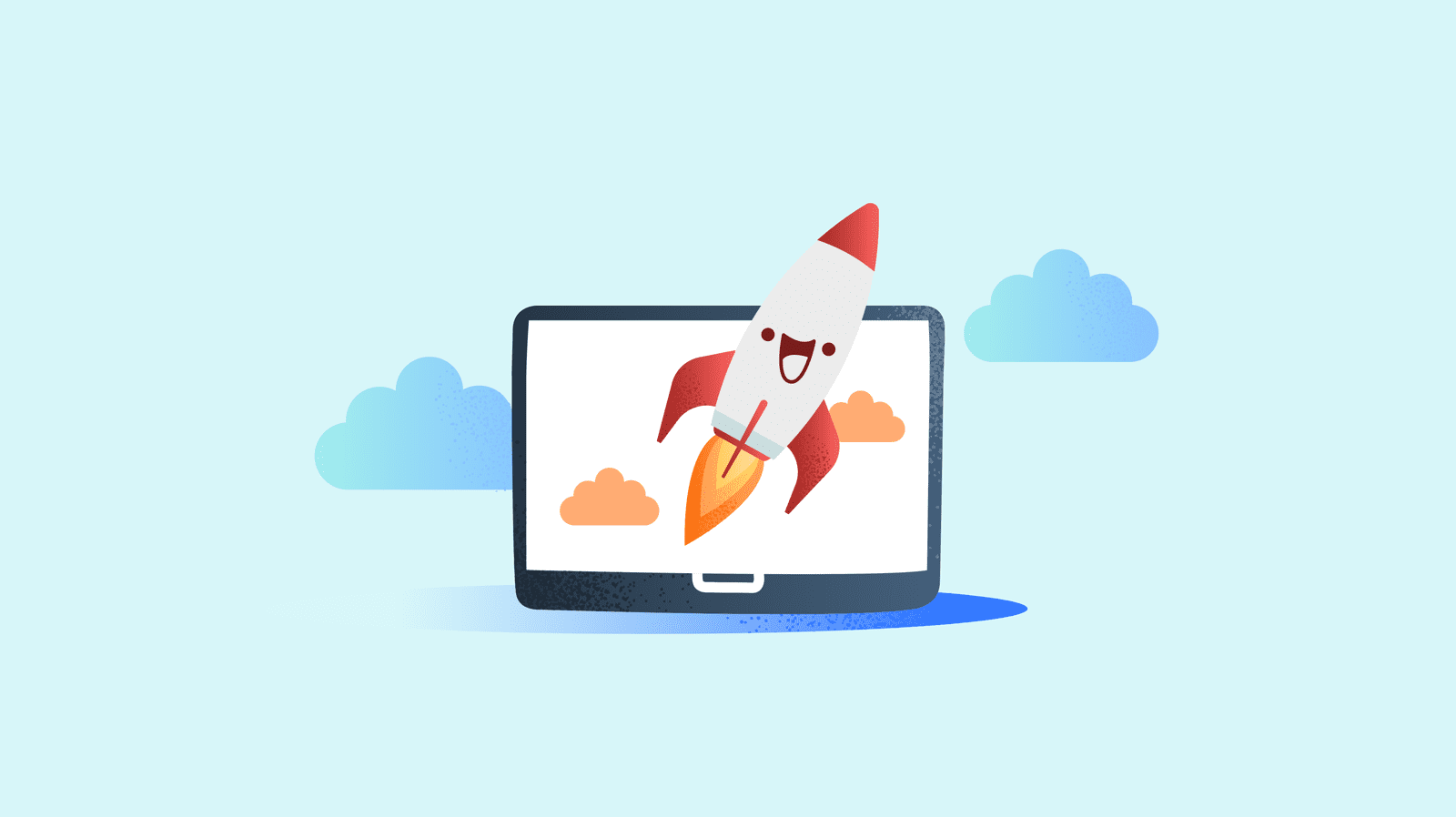
You won’t find products falling from the sky in a box with a red ribbon, ready to be unwrapped and launched.
Even if they did, buyers would be skeptical. The typical customer finds it difficult to embrace new products. And most companies do not study such drawbacks beforehand.
The outcome: according to Harvard professor Clayton Christensen, almost 70% of new product launches fail.
Making a success of a new product is the result of a multi-stage process of product release, for which you should prepare thoroughly.
Whether it’s your first time launching a product or service or your company has plenty of experience, we’ll help by reviewing everything that’s relevant to the development and release of new products.
How to create a new product or service
Many companies focus their efforts on designing and manufacturing a new product, while relegating to second place their market research, audience and other essential factors.
At the start of the process of developing a new product, you should focus on each of these points:
- Increasing sales.
- Fostering new opportunities in channels or markets.
- Expanding your network of customers and audience.
- Advertising your brand image.
- Solving set-backs or crises in the case of a defective product.
Before sitting down and thinking about how to design a new product, you should make a careful calculation as to what level of performance and profit margin you want to achieve, and accordingly, what budget and maximum expense you should devote to the new product.
Setting targets for a new product and including action steps based on specific figures, will make it easier for you to measure success at all stages of the development and launch of your new products.
→ Related content: Key Strategies for Product Marketing
Reasons new products fail
The Harvard Business Review points out as many as 40 ways in which a new product could become your worst decision, but they are summarized in these 5 more common scenarios:
- Your company finds itself unprepared for responding to a high demand for the product.
- The product doesn’t pass the initial tests satisfactorily so its launch is delayed.
- The product goes unnoticed as it’s not easily distinguished from its competition.
- The consumer isn’t informed or educated about the new product.
- The product has no real niche in the market.
Your goals when launching a new product
“Broaden your catalog and sell more” — these are the answers most often heard when a company suggests launching a product.
This decision is important, because it involves investing a great deal of resources in something that’s not 100% certain to succeed. So you have to ask yourself more questions and study the market carefully, since your goals may well vary with each product launch:
- Expand the range of products available under your brand.
- Enhance the quality of your brand with a star product.
- Imitate the competition in a new trend with huge sales potential.
- Expand into a new segment of the population or geographical region.
- Achieve many small, stable sales or figures in the millions.
- Attract new customers.
- Encourage customer loyalty with a unique product in order to improve KPIs such as retention rate or buyer's life cycle.
- Start with early adopters or target the general public directly.
→ Free Guide: The 100 must-have tools of a marketing department
5 steps to a successful product launch
Before you set the release date of your new product or service on your calendar, you shouldn’t forget the count-down.
In a product launch schedule, at least 8-12 weeks of pre-launch preparation are needed.
Even when that day arrives, the process around a new product doesn’t end: both the launch and the post-launch are equally relevant.
Would you like to have everything under control to make your product release worthy of a spectacular NASA-style take-off? Here we’ll give you the ultimate checklist of 5 steps for creating a product launch campaign.
Study your target
A new product or service fulfills a very obvious necessity for your company: to extend its catalog and get new sources of revenue.
But what about your audience’s requirements?
Are you going to first evaluate what unmet needs your target audience has, or first design a new product and later determine for which audiences it might be useful?
Whatever path you choose, these two processes must be closely linked. Before the product has a final design and goes on to manufacturing and quality checks, you must have a clear idea of your buyer persona.
The buyer persona is an ideal customer for your sales goal, who fulfills certain socio-demographic characteristics as well as specific online search and purchase behavioral patterns. Taking these factors into account, you can establish what your product, content and marketing campaigns should look like:
- What are your key audience segments?
- What long-term goals can you set for that audience?
- What kind of message and key ideas will appeal to that audience?
- What narrative is best suited to that audience?
→ Also of interest: 5 tips for preparing for a new season in ecommerce
Define your product correctly
The customer is always your number one priority, in every process.
Without a customer there may be a product, but there’d be no sales. Once you’ve determined your buyer person, you can focus on readjusting your design and marketing strategies around this new product or service.
When researching for your product launch, it's good to assess:
- What niche the new product will occupy in the market
- Its positioning both in your catalog and amid the competition
- Consumer tastes relevant to that niche
- The aspects of this type of product or service that are most often criticized or praised
- The general opinion of this type of product or service
- Recent trends, and whether they seem very transitory
Set your goals
Your schedule should be carefully established in advance, with wide margins and ambitious but realistic targets.
In addition, you must coordinate both your internal aims (focused on the product’s preparation) and external goals (aimed at launching the campaign that will announce the new product or service to the public).
In terms of business preparation, one of the critical aspects of product launch is supply chain forecasting. Logistics is key when introducing anything new into the market and to your distribution network: imagine announcing something with great fanfare and then not being able to send it to your customers in Hong Kong.
Forecasting of stocks, warehousing and your network of distributors and shipments is a task at least as important as the design of a marketing banner.
→ Also check out: Best Product Management software
Among the external actions that are involved in a launch, three steps in your goals can be recognized:
- Goals that serve to awaken interest and awareness about the new product.
- Goals that give rise to the active participation of the buyer persona.
- Goals focused on sales conversion and the acquisition of new customers.
Seek to adapt all these goals around a new product to the SMART criteria: specific, measurable, achievable, relevant and time-bound objectives.
Remember that unless this is your first product or service, the aim of a launch is always twofold:
- To maintain your current customer base (emphasizing the value that the new product brings to them)
- To attract new customers (emphasizing the product’s degree of innovation or trendiness)
You’d also do well to make the launch of your product or service coincide with a major event in your industry such as a trade show, convention or congress; and that having a thematic connection, can reinforce your message.
If this isn’t feasible, a fantastic alternative is to create your own events around the product launch, from press presentations to dinners for loyal customers or a live online question session, using a webinar or a forum on platforms such as Reddit, depending on the profile of your audience.
→ Related content: 20 tips to make your next trade show a success
Synchronize all of your product information
You will see that the volume of materials accumulating on a new product or service will grow at a pretty stressful pace. Even more so when test materials, mockups, prototypes and A/B tests build up in the early stages of design and will lead to more and more versions, right up to the final choice of materials to be used in the launch.
And even then the data might still need to be updated!
This implies mobilizing a volume of resources that’s huge for any company to handle; including images, videos, 3D designs, sketches, plans and logos; also corporate, descriptive and advertising texts, tables, references and listings comprising product information that is constantly being updated.
Keeping all your media assets and product information in order and under control requires the use of specific digital tools such as Product Information Management (PIM) software. This tool will automate the collection, updating and synchronization of all these materials between the various users in your team, your distributors and sales reps, and across all sources and channels.
→ Read more: Top tips for creating a distribution policy for your products
Optimize your message
Once the launch date approaches, it’s vital to have a marketing strategy in place in good time if you are to succeed in your efforts to apply cross-selling, up-selling, inbound and outbound publicity and SEO optimization.
Start your campaign with short, direct messages about the new product or service, rather than setting out all its features in detail. At this initial stage, the focus should be on attracting attention.
Try to study the options and determine which narrative will best fit your product type and audience, while you should remain willing to change it after the launch. Comparing and adjusting the message and SEO is a constant task that continues throughout the post-launch and ensures the expansion of the product after it’s been presented to the audience.
These are the key points that should be part of your initial product launch message:
- A clear and attractive tag-line
- What problem, gap or need the product will resolve
- A list of key features
- Its main value or benefit
- A corporate statement
→ You might also try: Copywriting techniques to make your products shine
Once the message is established, you should decide what marketing actions to take and prioritize efforts and tasks to do with advertising. This will depend on the channels most used by your target audience:
- Mailing campaign
- Product-specific app
- Landing pages
- Ad campaign
- Video
- Press contact (by means of notes, a presentation-conference or articles promoted in the media)
- Influencers
- Social media publications
Remember that, at this stage, consistency is key and that a single action is not enough. It’s important to persist with a global and omnichannel strategy, because both the media and the customers themselves may miss your news.
→ Also check out: The best product management practices for you to apply
Conclusion
And finally... the fun has only just begun.
You’ll have to be prepared to repeat and re-launch the message and even repeat the product launch, depending on the level of response you get the first time round.
Adapting your materials, or taking advantage of a new event or season to refresh the new product are common strategies and they don’t imply you’ve failed.
If you add ebooks, success stories, tutorials and webinars about your product over time, you will have achieved the most comprehensive strategy and avoided the new product falling into oblivion.
Our Sales Layer PIM streamlines the gathering together of your product data, so you can launch new products at the pace and volume you want. Get ready for your next launch: try it free for 30 days or attend a demo to see it in action.




.png?width=520&name=Blog%20Partner%20(3).png)

.png?width=520&name=Blog%20Partner%20(1).png)


